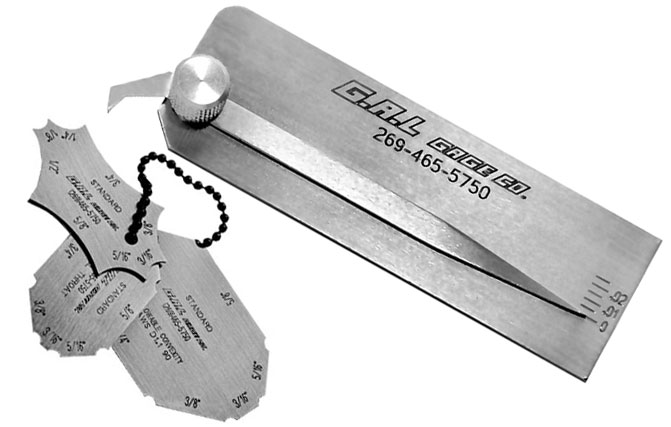Improving Your Welding Skills: Concentrate On Gauge Fillet Welds
Improving Your Welding Skills: Concentrate On Gauge Fillet Welds
Blog Article
Fillet Weld Layout Approaches: Optimizing Joint Efficiency and Looks for Structural Stability
In the world of structural design and manufacture, the value of fillet weld style techniques can not be overstated. By meticulously thinking about variables such as weld account optimization, material selection, joint preparation strategies, welding procedure effectiveness, and aesthetic enhancement producers, methods and designers can accomplish a harmonious equilibrium between capability and look in their bonded structures.
Weld Profile Optimization


Achieving an optimal weld profile entails a thorough factor to consider of elements such as product density, joint setup, welding position, and wanted welding speed. Additionally, the option of proper welding specifications, such as voltage, existing, and take a trip rate, is basic in controlling the form and measurements of the fillet weld. Utilizing advanced welding techniques, such as pulse welding or robot welding, can further fine-tune the weld account to satisfy specific style needs and high quality standards.
Basically, weld account optimization is an essential aspect of fillet weld design that straight affects the general efficiency and dependability of welded joints in structural applications.
Material Option Considerations
When considering material selection for fillet weld style, the compatibility of the base metals is an important element affecting the structural stability of the joint. It is important to pick products that not just bonded together successfully yet additionally possess similar mechanical properties to ensure the lots is equally dispersed in between the base and the weld steels. Welding materials with vastly different homes can result in issues such as stress and anxiety focus, premature joint failure, or breaking.
In addition, the setting in which the bonded framework will run have to be thought about when picking products. Variables like deterioration resistance, temperature fluctuations, and direct exposure to chemicals can all impact the durability and performance of the weld joint. By selecting materials that are ideal for the designated application and atmosphere, the general toughness and integrity of the bonded joint can be significantly improved.
For that reason, comprehensive consideration of product compatibility and environmental factors is critical in visit homepage guaranteeing the weld joint's strength, longevity, and total architectural honesty.

Joint Prep Work Methods
Taking into consideration the crucial role material option plays in guaranteeing the structural stability of fillet weld joints, it is important to execute exact joint preparation methods that maximize the connection between the base metals. Joint prep work is an important action that straight influences the try this website high quality and stamina of the weld. One fundamental technique is the cleaning of base steels to remove any pollutants like corrosion, oil, or paint that could compromise the weld's honesty. This can be attained via methods such as grinding, wire brushing, or chemical cleansing.
In addition, appropriate fit-up of the joint is vital to guarantee uniform circulation of the welding material and avoid problems like incomplete penetration or excessive build-up. Beveling the sides of the base metals can create a groove that enables for deeper weld penetration and a more powerful bond. In addition, tack welding the elements in location prior to the final weld helps maintain alignment and decreases distortion throughout the welding procedure. By carefully following these joint prep work strategies, welders can improve the overall performance and aesthetics of fillet weld joints while ensuring structural sturdiness.
Welding Refine Effectiveness
Reliable welding procedures are vital for attaining ideal productivity and high quality in fillet weld manufacture. Procedures like gas metal arc welding (GMAW) and flux-cored arc welding (FCAW) are typically made use of for fillet welds due to their versatility and rate.
In addition, ensuring proper tools arrangement and upkeep is crucial for reliable welding. Normal calibration of welding machines, examination of consumables, and maintenance of welding torches can avoid downtime and remodel, eventually conserving time and sources. Additionally, utilizing proficient welders with proficiency in the particular welding process being used can considerably impact performance. Well-trained welders are extra experienced learn this here now at readjusting criteria, repairing problems, and preserving regular weld high quality.
Aesthetic Improvement Techniques
To optimize the quality of fillet weld construction, carrying out aesthetic improvement approaches can play a crucial role in guaranteeing accuracy and precision throughout the welding procedure. Aesthetic help such as weld dimension assesses and amplifying lenses can help in examining weld accounts and measurements precisely. By integrating these visual enhancement methods into the welding procedure, welders can achieve not just structurally audio fillet welds but also aesthetically enticing outcomes that satisfy market standards.

Verdict
To conclude, maximizing fillet weld style includes mindful factor to consider of weld account, material choice, joint prep work, welding process effectiveness, and aesthetic enhancement techniques. By executing these strategies, architectural stability can be enhanced while likewise achieving aesthetic charm. It is necessary to prioritize both performance and aesthetic appeals in fillet weld design to guarantee the general quality and toughness of the joint.
By diligently thinking about variables such as weld profile optimization, material selection, joint preparation methods, welding process efficiency, and aesthetic improvement engineers, producers and techniques can accomplish an unified balance between performance and appearance in their welded structures.In the realm of fillet weld design, optimizing the weld account plays a critical function in making certain architectural honesty and efficiency. The weld account, which consists of the dimension and shape of the weld cross-section, directly impacts the distribution of stress and load-bearing capability within the joint. It is important to pick products that not just bonded with each other properly however likewise possess similar mechanical residential properties to ensure the load is equally distributed in between the base and the weld steels - Gauge Fillet Weld.In final thought, enhancing fillet weld layout includes careful consideration of weld account, product choice, joint preparation, welding procedure efficiency, and visual improvement techniques
Report this page